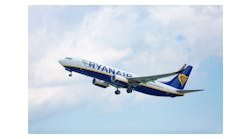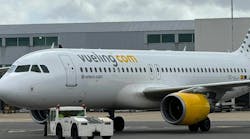It was a turbulent first quarter for Hawaiian Airlines, which reported significant losses as declining travel demand from COVID-19 fears and containment policies devastated its financial performance.
Parent Hawaiian Holdings Inc. today reported a first quarter net loss of $144.4 million or a loss of $3.14 a share. During last year’s first quarter, Hawaiian had a net income of more than $36.4 million or 75 cents a share.
The carrier’s adjusted net income, which included a CARES Act tax benefit, was a net loss of $34 million or 74 cents a share. Revenue fell to more than $559.1 million, a nearly 15% drop from first quarter 2019 when revenue was nearly $656.8 million.
The state’s largest carrier said demand began dropping early in the year when the U.S. government imposed restrictions on Chinese arrivals followed by hits to its South Korea and Japan routes. Losses accelerated in mid-March after governments in Australia, New Zealand, Tahiti, American Samoa and Hawaii implemented self-isolation or quarantine policies for incoming arrivals.
“The first quarter of 2020 brought dramatic change to the global aviation industry as COVID-19 spread across the globe. Our first quarter results reflect the sharp drop in demand experienced initially on our South Korea and Japan routes in February, and across our entire network in March,” Peter Ingram, Hawaiian Airlines President and CEO, said in a statement. “With such profound changes to our business, our focus has pivoted to sustaining a limited operation, enhancing liquidity, preserving cash and preparing for a new reality as we begin to emerge from the pandemic in the weeks ahead.”
The drop could hit Hawaii’s economy hard since Hawaiian employs about 7,500 workers, 90% of whom live in Hawaii. So far about 50% of Hawaiian’s workforce has contributed to the company’s quest to conserve labor costs by taking voluntary leave, reduced hours or pay cuts, Ingram said.
Ingram said Hawaiian Airlines management and the flight attendants, who belong to the Association of Flight Attendants-CWA (AFA) union, have finally agreed on a new five-year contract. The contract, which covered some 2,100 flight attendants, became amendable on Dec. 31, 2016.
“More than ever it is important that our team is unified,” Ingram said.
Tourism recovery for Hawaii really won’t begin to start until the state ends a mandatory 14-day self-quarantine, he said.
Prior to the downturn, Hawaiian offered nonstop service to Hawaii from 13 U.S. gateway cities — more than any other airline. It also offered service from Japan, South Korea, Australia, New Zealand, American Samoa and Tahiti. On average, it provided more than 160 jet flights daily between the Hawaiian Islands, and over 240 daily flights system wide.
In mid-March, Hawaiian began making significant reductions to flights and instituted a hiring freeze and other cost-cutting measures.Through April, it had made system-wide cuts of 95%.
The earnings report followed a dismal March traffic report, where passengers plummeted more than 45% to just 542,456 passengers this March as compared to 993,548 passengers in March of 2019. Hawaiian’s March load factor — the share of seats filled — decreased by 28.4 percentage points to 58%.
During the first quarter, Hawaiian carried 2,362,196 first-quarter passengers — a more than 16% decrease compared with the first quarter of 2019. During the same period, Hawaiian’s load factor fell 10.5 percentage points to 74.6%.
The picture has only worsened since.
———
©2020 The Honolulu Star-Advertiser
Visit The Honolulu Star-Advertiser at www.staradvertiser.com
Distributed by Tribune Content Agency, LLC.



